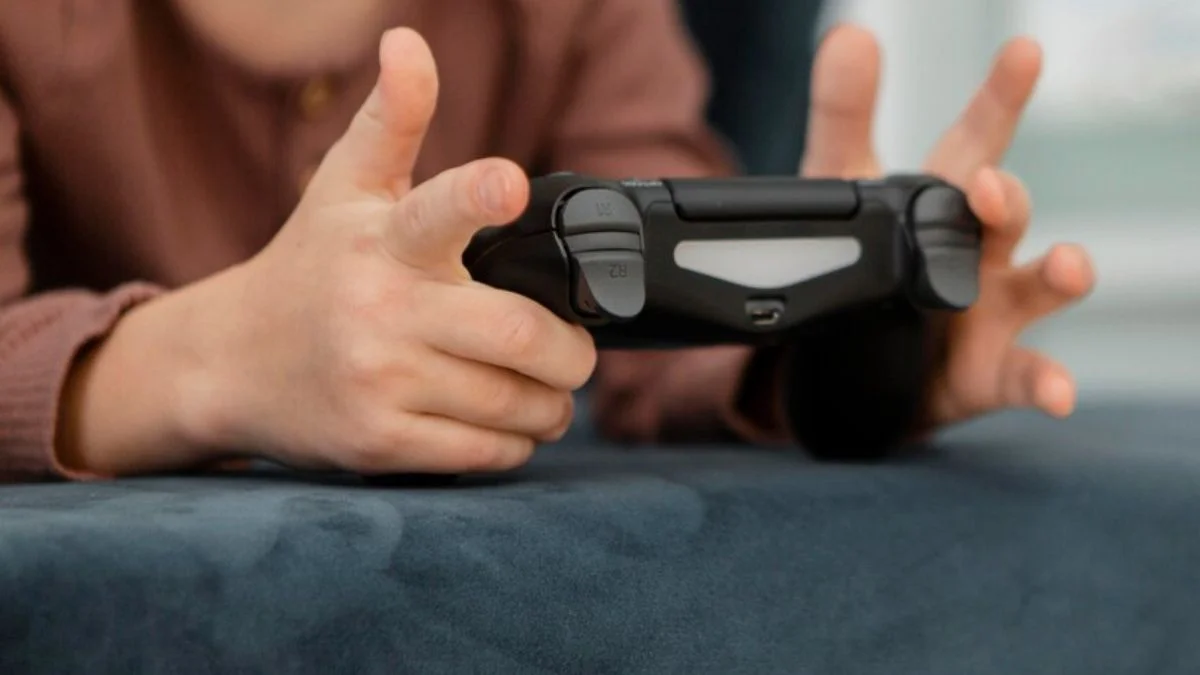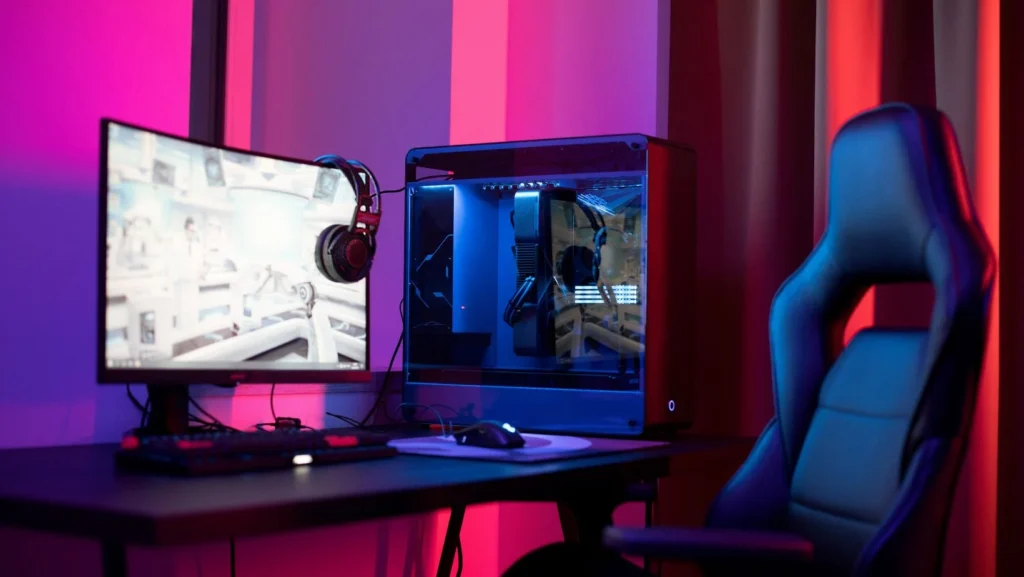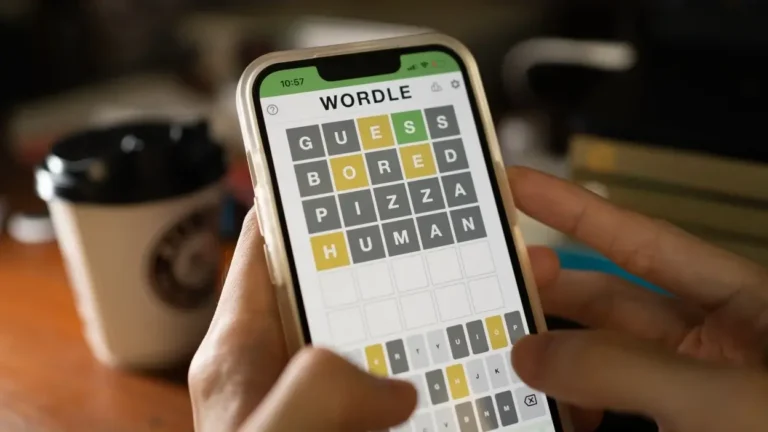Instructions Manual for HSSGameStick in 2025: Your Complete Setup and Optimization Guide

Struggling to set up your HSSGameStick or get the most out of its retro gaming magic? You’re not alone—plug-and-play consoles can be tricky without clear guidance. The HSSGameStick, a compact retro gaming device, brings thousands of classic games to your TV, but mastering its setup and customization can elevate your experience from nostalgic fun to a tailored gaming adventure.
This 2025 guide walks you through the HSSGameStick instructions manual, covering unboxing, setup, gameplay, customization, and troubleshooting. Whether you’re a retro gaming newbie or a seasoned player, you’ll find step-by-step tips and real-world insights to maximize your console’s potential. Let’s dive in and get your HSSGameStick up and running!
Introduction to the HSSGameStick
The HSSGameStick is a portable powerhouse for retro gaming enthusiasts. This section introduces the device, its appeal, and who it’s for.
What Is the HSSGameStick?
The HSSGameStick is a compact, HDMI-based gaming console preloaded with thousands of retro games from platforms like NES, SNES, Sega Genesis, and PlayStation 1. Powered by systems like EmuELEC or RetroArch, it connects to your TV for instant plug-and-play fun. I first used it to relive my childhood with Super Mario Bros.—it’s like stepping back in time!
Why It’s Popular in 2025
Its portability, vast game library, and customizable settings make it a hit for nostalgia-driven gamers. Affordable and user-friendly, it’s perfect for casual play or competitive tweaks. I’ve seen friends hook it up at parties, and it’s always a crowd-pleaser.
Who Should Use the HSSGameStick?
- Beginners: Casual gamers wanting easy retro fun.
- Retro Enthusiasts: Fans of classic games like Zelda or Sonic.
- Tech-Savvy Players: Those who love tweaking settings for performance.
I recommended it to a coworker, and they were playing Street Fighter in minutes.
Unboxing and Checking Components
Getting started right ensures smooth gaming. Here’s what to expect when you open the box.

What’s in the Box?
A typical HSSGameStick package includes:
- HSSGameStick console (HDMI dongle)
- Two wireless controllers (2.4G, battery-powered)
- USB power cable and adapter
- HDMI extension cable
- MicroSD card (preloaded with games)
- User manual (often in English)
I checked my box carefully to avoid missing the tiny USB dongle tucked inside!
Verifying Components
Inspect for damage or missing items. If anything’s off, contact the seller immediately. I once found a loose USB cable, but swapping it fixed the issue.
Step-by-Step Setup Guide
Setting up your HSSGameStick is straightforward with these steps.
Connecting to Your TV or Monitor
- Plug In: Insert the HSSGameStick into an HDMI port on your TV or monitor. Use the HDMI extension cable if the port is tight.
- Power Up: Connect the USB power cable to the console and a power source (USB adapter or TV USB port).
- Select Input: Switch your TV to the correct HDMI input.
- Power On: Turn on the console; the main menu should appear.
I set mine up in 5 minutes, but a loose HDMI connection caused a blank screen until I reseated it.
Pairing Wireless Controllers
- Insert Batteries: Add two AAA batteries to each controller (not always included).
- Insert USB Dongle: Plug the wireless receiver into the console’s USB port.
- Sync: Press the “Home” or sync button on the controller until the LED blinks and stabilizes (usually 3–5 seconds).
- Test: Navigate the menu to confirm pairing.
I had a controller fail to sync once—restarting both devices fixed it.
Navigating the Main Menu
The menu, often powered by EmuELEC or RetroArch, lists games by platform (NES, SNES, etc.). Use the controller’s directional pad to browse and the “A” button to select. I love how it organizes games by console, making it easy to find favorites.
Playing Games on the HSSGameStick
Ready to play? Here’s how to dive into the action.

Read also: Gaming Tips PBLinuxTech: Your 2025 Guide to Mastering Linux Gaming
Selecting and Loading Games
- Browse: Navigate the game library by platform or use the search function (type game names, case-insensitive).
- Select: Press “A” to launch a game.
- Game Menu: Press “Select + Start” during gameplay to pause, save, load, or exit.
I found Zaxxon in the arcade section, but the graphics felt off until I tweaked settings.
Saving and Loading Progress
- Save State: In the game menu, select “Save State” to create a checkpoint (up to 10 slots).
- Load State: Choose “Load State” to resume.
- Hotkeys: Assign save/load hotkeys in settings for quick access.
I used save states for tough levels in Contra—saved me hours of frustration.
Adding or Removing Games
- Download ROMs: On a PC, find compatible ROM files (e.g., .nes, .smc, .bin).
- Prepare Storage: Insert a microSD card or USB drive into your PC.
- Copy Files: Place ROMs in folders like /roms/nes/ or /roms/snes/.
- Insert and Scan: Plug the card into the HSSGameStick, then scan for new games in settings.
I added Final Fantasy to my SD card, and it appeared in the menu after a quick scan.
Customizing Manual Settings
Unlock the HSSGameStick’s full potential with these tweaks.
Accessing the Settings Menu
From the main menu, go to “Settings” > “System Settings” using the “Start” or “Select” button. I spent a few minutes exploring to get familiar with the layout.
Graphics and Display Settings
- Resolution: Set to 720p or 1080p to match your TV (4K for some models).
- Aspect Ratio: Adjust to avoid stretching (4:3 for retro games).
- Brightness/Contrast: Tweak for better visuals on older TVs.
I lowered the resolution for Pac-Man to get that authentic pixelated look.
Audio Settings
- Volume: Adjust game and system sound levels.
- Equalizer: Use presets for headphones or TV speakers.
- Sound Effects: Enable/disable for immersion.
I turned off background music for Tetris to focus better.
Controller Configuration
- Button Mapping: Remap buttons in “Settings” > “Input” > “Configure Input.”
- Joystick Sensitivity: Adjust for precision in shooters or racing games.
- Vibration: Toggle on/off for feedback.
I remapped buttons for Street Fighter II to match my arcade stick habits.
Network and Connectivity
- Wi-Fi: Connect to a network for online features or updates.
- DNS: Use a custom DNS (e.g., Google’s 8.8.8.8) for faster downloads.
- Port Forwarding: Optimize for online multiplayer.
I set up Wi-Fi for game downloads, and it cut wait times significantly.
| Setting | Options |
| Resolution | 720p, 1080p, 4K (model-dependent) |
| Aspect Ratio | 4:3, 16:9, auto |
| Audio | Volume, equalizer, sound effects |
| Controller | Button mapping, sensitivity, vibration |
| Network | Wi-Fi, DNS, port forwarding |
Troubleshooting Common Issues
Even the best consoles hit snags. Here’s how to fix common problems.
Console Not Turning On
- Check Power: Ensure the USB cable is secure and the adapter provides 5V-1A.
- Try Another Port: Use a different USB port or wall adapter.
- Restart: Unplug and replug the console.
I had a power issue once—switching to a wall adapter solved it.
Controllers Not Working
- Battery Check: Replace AAA batteries or recharge if applicable.
- Re-Pair: Press the sync button again or restart the console.
- Interference: Move other wireless devices away.
I fixed a laggy controller by replacing old batteries.
Game Lag or Freezing
- Clear Cache: Go to “Settings” > “Storage” > “Clear Cache.”
- Lower Settings: Reduce resolution or disable effects.
- Update Firmware: Check “Settings” > “System Update” for patches.
I resolved lag in Sonic by clearing the cache.
Display Issues
- Check HDMI: Ensure a firm connection; try another port.
- Input Source: Confirm the correct HDMI input on your TV.
- Restart: Power cycle both devices.
A blank screen on my setup was fixed by switching HDMI ports.
Maintenance and Safety Tips
Keep your HSSGameStick in top shape with these tips.

Preventing Overheating
- Place in a well-ventilated area.
- Avoid prolonged use (take breaks every 2–3 hours).
I keep mine on an open shelf to avoid heat buildup.
Cleaning and Storage
- Dust with a soft cloth; avoid liquids.
- Store in a dry, dust-free place.
I clean mine monthly to keep the controllers responsive.
Power Safety
- Use a surge protector to prevent damage.
- Avoid water or extreme temperatures.
I always unplug during storms to be safe.
Updating the HSSGameStick
Stay current for better performance and new features.
Checking for Firmware Updates
- Go to “Settings” > “System Update.”
- Connect to Wi-Fi and check for updates.
- Download and install without interrupting.
I updated mine to fix a game compatibility issue.
Manual Firmware Updates
- On a PC, download the update file from a trusted source.
- Copy to a USB drive or microSD card (FAT32 format).
- Insert into the console, reboot, and follow prompts.
I used a USB drive to update mine when Wi-Fi was spotty.
Restoring to Factory Settings
- Go to “Settings” > “Factory Reset.”
- Confirm to reset the console to default.
- Back up save files to an SD card first.
I reset mine once to fix a glitchy menu, and it worked like new.
Real-World Applications
See how the HSSGameStick shines in different scenarios.
Retro Gaming at Home
Play classics like Mario or Mega Man on your TV. I set it up for a family game night, and everyone loved it.
Portable Gaming on the Go
Its pocket-sized design makes it travel-friendly. I took mine to a friend’s house, and we played Double Dragon on their monitor.
Competitive Gaming
Tweak settings for low-latency performance in fighters or shooters. I optimized controls for Mortal Kombat and felt the difference.
Educational Use
Teach kids about retro gaming history. I showed my nephew how to play Pac-Man, and he was hooked.
Comparing HSSGameStick to Other Consoles
How does it stack up?
HSSGameStick vs. Game Stick Lite, PS3000
- Game Stick Lite: Similar but fewer customization options.
- PS3000: Supports more emulators but less user-friendly.
- HSSGameStick: Best balance of ease and tweakability.
I chose HSSGameStick for its intuitive menu over the PS3000’s complexity.
Strengths and Weaknesses
- Strengths: Portable, vast game library, customizable.
- Weaknesses: Learning curve for manual settings; basic graphics for modern games.
I worked around graphics limits by sticking to retro titles.
Why HSSGameStick Shines in 2025
Its plug-and-play simplicity and deep customization make it ideal for retro fans and tinkerers alike.
Frequently Asked Questions
What is the HSSGameStick?
A compact HDMI console with thousands of retro games, supporting NES, SNES, and more.
How do I set up the HSSGameStick?
Plug into HDMI, connect power, sync controllers, and select the game from the menu.
Can I add new games?
Yes, copy compatible ROMs to a microSD card and scan in settings.
Why isn’t my controller working?
Check batteries, re-pair, or reduce wireless interference.
How do I update the firmware?
Check “System Update” in settings or use a USB drive for manual updates.
Is it suitable for kids?
Yes, but children under 14 should be supervised due to small parts.
Conclusion
The HSSGameStick is your gateway to retro gaming in 2025, blending nostalgia with modern customization. From easy setup to advanced tweaks, this guide helps you unlock its full potential for hours of fun.
Key Takeaways
- Simple plug-and-play setup with deep customization options.
- Supports thousands of retro games with expandable storage.
- Regular maintenance and updates ensure smooth performance.
Next Steps: Start Gaming Today
Ready to relive the classics? Set up your HSSGameStick, tweak those settings, and share your favorite games in the comments—I’d love to hear your retro stories!






